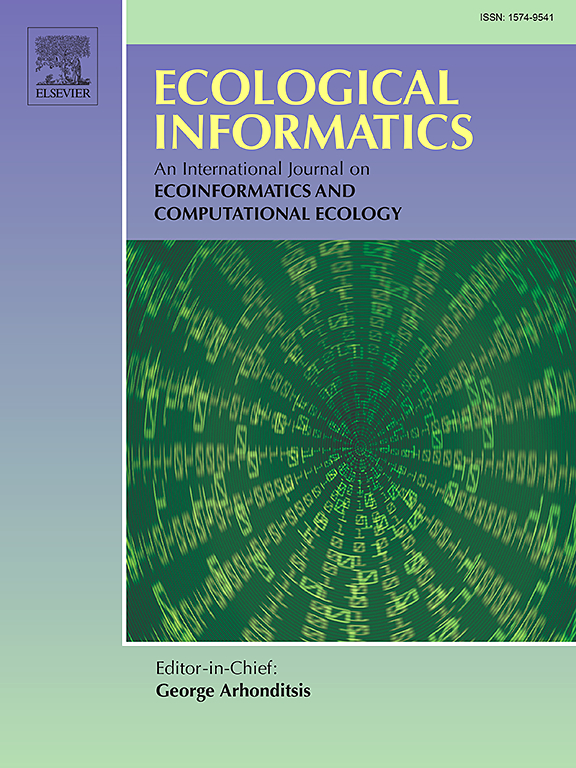A fish counting model based on pyramid vision transformer with multi-scale feature enhancement
IF 5.8
2区 环境科学与生态学
Q1 ECOLOGY
引用次数: 0
Abstract
As automatic counting technology allows for non-invasive counting of fish populations, the demand for it in fisheries management and ecological conservation has been growing. However, existing automatic counting methods struggle with noise interference caused by uneven lighting in complex environments, and also face challenges from issues such as uneven fish distribution and the high density of fish populations. To address these issues, we introduce a new counting network based on a pyramid vision transformer. Herein, a frequency-domain multi-scale consistent attention mechanism is designed . This mechanism facilitates information exchange between areas of low and high fish density, addressing the issue of nonuniform density distribution. Subsequently, a spatial domain multi-scale edge enhancement module is introduced to enhance the detection of fish edge features. This module employs guided filtering and asymmetric convolution to mitigate the effects of noise caused by inadequate and nonuniform illumination. Furthermore, we proposed a global multilevel feature fusion mechanism to strengthen the extraction of the co-occurring information from the multi-scale feature map, which enhanced the focus of the model on the fish body. This feature effectively addresses the problem of fish occlusion for improving the accuracy and reliability of the counting process. The experimental results demonstrated that the network achieves a MAE of 2.35 and a MSE of 3.05 on the CCD dataset, with values of 3.91 and 5.08, respectively, in additional testing. These results confirm the high accuracy of the model and its robust stability, which is expected to provide technical support for sustainable management and ecological conservation of aquaculture.
求助全文
约1分钟内获得全文
求助全文
来源期刊

Ecological Informatics
环境科学-生态学
CiteScore
8.30
自引率
11.80%
发文量
346
审稿时长
46 days
期刊介绍:
The journal Ecological Informatics is devoted to the publication of high quality, peer-reviewed articles on all aspects of computational ecology, data science and biogeography. The scope of the journal takes into account the data-intensive nature of ecology, the growing capacity of information technology to access, harness and leverage complex data as well as the critical need for informing sustainable management in view of global environmental and climate change.
The nature of the journal is interdisciplinary at the crossover between ecology and informatics. It focuses on novel concepts and techniques for image- and genome-based monitoring and interpretation, sensor- and multimedia-based data acquisition, internet-based data archiving and sharing, data assimilation, modelling and prediction of ecological data.
 求助内容:
求助内容: 应助结果提醒方式:
应助结果提醒方式:


